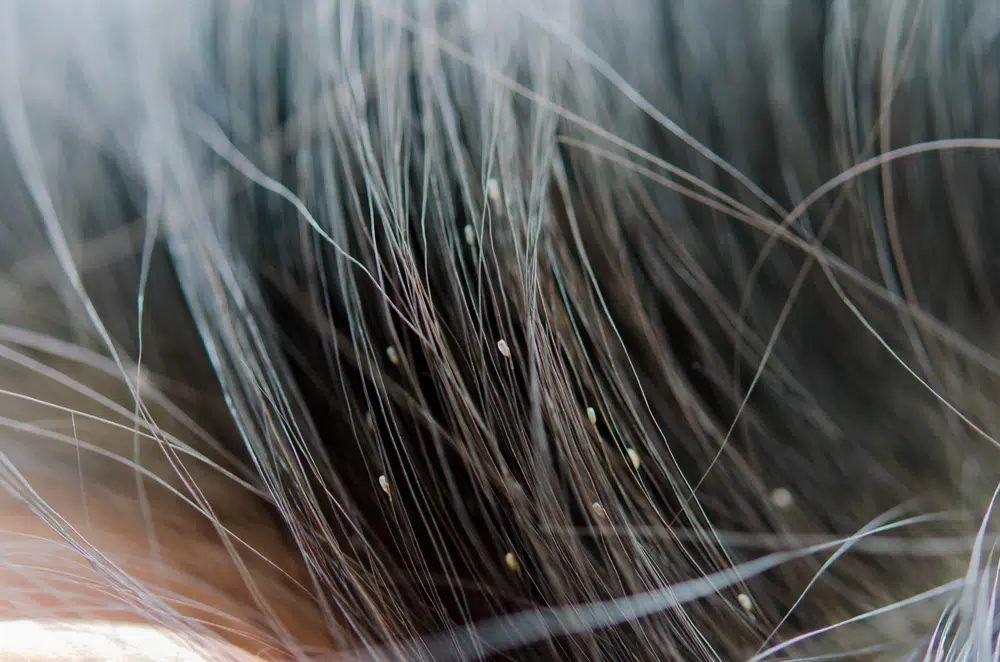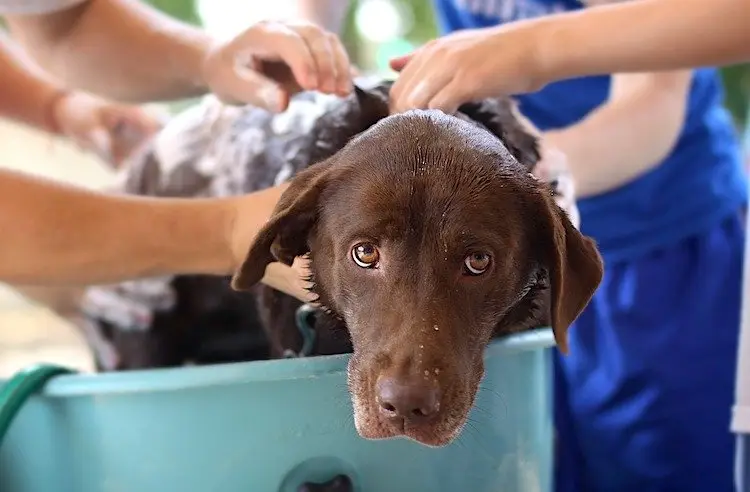Contents
- 1 Can Dogs Get Lice From Humans: The Definitive Expert Guide to Discovering Cross-Species Lice Transmission Truths
- 1.1 Introduction
- 1.2 Understanding Lice Biology and Species Specificity
- 1.3 Types of Lice: The Human vs. Canine Lineup
- 1.4 Comparative Analysis: Human vs. Dog Lice
- 1.5 Can Dogs Get Lice From Humans: The Scientific Answer
- 1.6 Recognizing the Signs: What to Look For
- 1.7 Prevention: Your Best Defense Strategy
- 1.8 Treatment: Getting Rid of Unwanted Guests
- 1.9
- 1.10 Environmental Management: Cleaning House
- 1.11 When to Call in the Professionals
- 1.12 Busting Common Myths
- 1.13 Frequently Asked Questions
- 1.13.0.1 My child has head lice – should I be worried about our dog catching them?
- 1.13.0.2 I found bugs on my dog – could they be lice from our recent human lice outbreak?
- 1.13.0.3 Can I use the same lice shampoo on my dog that I used on my kids?
- 1.13.0.4 How long does it take to get rid of dog lice?
- 1.13.0.5 Can our cat catch lice from either humans or our dog?
- 1.13.0.6 Are dog lice a common problem?
- 1.14 Conclusion
- 1.15 External Resources and References
Can Dogs Get Lice From Humans: The Definitive Expert Guide to Discovering Cross-Species Lice Transmission Truths
Introduction
As a pet parent, you may worry about whether dogs can get lice from humans, especially during outbreaks in your household. Fortunately, dogs cannot catch lice from humans due to biological barriers that have evolved over time, providing reassurance during these stressful situations.
Understanding Lice Biology and Species Specificity
What Are These Tiny Troublemakers?
Let’s start with the basics. Lice are incredibly small, wingless insects that have mastered the art of being unwelcome houseguests. They belong to a group called Phthiraptera, and they’re what scientists call “obligate parasites” – which is a fancy way of saying they absolutely cannot survive without their chosen host. Think of them as the ultimate picky eaters of the insect world!
These little critters are completely dependent on their host for everything – warmth, food, and even the right humidity levels. It’s like they’ve signed an exclusive contract with their host species and refuse to work with anyone else.
The Fascinating Science Behind Species Specificity
Here’s where it gets really interesting! Over millions of years, lice have become incredibly specialized. It’s like each species of lice has its own personal key that only fits one specific lock – and that lock is their host species.
Temperature Matters More Than You Think: Your body temperature sits comfortably at around 98.6°F, while your dog runs a bit hotter at 101-102.5°F. This might not seem like much to us, but to a louse, it’s the difference between a cozy home and an uninhabitable desert!
It’s All About the Perfect Fit: Imagine trying to grip a smooth marble with tweezers designed for picking up cotton balls – that’s what it’s like for human lice trying to hold onto dog fur. The claws and mouthparts of lice are like tiny, specialized tools crafted specifically for their host’s hair type.
Chemical Compatibility: Just like how you might be allergic to certain foods, lice can only “digest” the blood and skin chemistry of their specific host. Human blood is like a completely different cuisine to them!
Types of Lice: The Human vs. Canine Lineup
The Human Lice Squad
We humans can host three different types of these unwelcome visitors:
- Head Lice (Pediculus humanus capitis): The most common culprits behind those frantic school notifications
- Body Lice (Pediculus humanus corporis): Less common these days, thankfully
- Pubic Lice (Phthirus pubis): The ones that prefer more private real estate
The Canine Lice Team
Our four-legged friends have their own set of potential parasites:
- Chewing Lice (Trichodectes canis): These are like the vegetarians of the lice world – they munch on skin flakes instead of blood
- Sucking Lice (Linognathus setosus): The vampires of dog lice, these can actually cause anemia if there are too many
- Biting Lice (Heterodoxus spiniger): Rare in North America, but worth knowing about
Comparative Analysis: Human vs. Dog Lice
| What We’re Comparing | Human Lice | Dog Lice |
| Species | Pediculus humanus, Phthirus pubis | Trichodectes canis, Linognathus setosus |
| Preferred Temperature | 98.6°F (37°C) | 101-102.5°F (38.3-39.2°C) |
| Dining Preferences | Blood-sucking | Chewing (skin debris) or blood-sucking |
| Survival Without Host | 1-2 days (they’re not very independent!) | 2-3 days |
| How They Spread | Direct contact, shared items | Direct contact, contaminated grooming tools |
| Can They Jump Species? | Absolutely not | Not a chance |
| Treatment Time | 7-10 days | 2-4 weeks |
| Favorite Hangout Spots | Scalp, body, pubic area | Everywhere, but love the neck and ears |
Can Dogs Get Lice From Humans: The Scientific Answer
Why Mother Nature Built These Barriers
Evolution is pretty amazing when you think about it. Over millions of years, lice and their hosts have developed this incredibly specific relationship. It’s like they’ve been married for so long that they can’t imagine life with anyone else!
They’re Picky About Their Partners: Lice have developed super-sensitive chemical detectors that help them recognize their “one true host.” It’s like having a biological GPS that only works for one location.
No Successful Mixing: Even if a brave human louse tried to set up shop on your dog, it would be like trying to have a baby with someone from a completely different planet – it just won’t work!
Custom-Built Immune Relationships: The relationship between lice and their hosts involves a complex dance with the immune system that’s been choreographed over millions of years.
The Physical and Chemical Reality Check
Think about the difference between your hair and your dog’s fur. Your hair grows in a completely different pattern, has a different thickness, and even feels different to the touch. For a louse, trying to navigate the wrong type of hair would be like trying to climb a rope when you’re built for climbing stairs.
Then there’s the chemical environment. Your skin has its own unique pH balance, oil production, and chemical signature. To a louse from another species, your dog’s skin would be like trying to live in a completely alien atmosphere.
Recognizing the Signs: What to Look For
If Your Family Has Lice
You’ll probably notice these telltale signs:
- That maddening nighttime itching (lice are apparently night owls)
- Actually spotting the little critters or their eggs in hair
- Red, irritated bumps around the scalp, neck, or shoulders
- The unsettling feeling that something’s crawling on you
If Your Dog Has Lice
Your furry friend might show:
- Obsessive scratching and biting at their skin
- Visible lice or eggs in their beautiful coat
- Patches where they’ve scratched away fur
- A dull, rough-looking coat
- General restlessness and discomfort
- In severe cases, they might become anemic from blood loss
Getting a Professional Opinion
Sometimes it takes a trained eye to tell the difference. Veterinarians and doctors can easily identify which species of lice they’re dealing with just by looking at them under a microscope – each species has its own unique “fingerprint.”
Prevention: Your Best Defense Strategy
Protecting Your Human Family
- Keep personal items personal (no sharing combs, brushes, or hats)
- Do regular “lice checks” on family members, especially the kids
- Maintain good hygiene habits
- Teach children about the importance of not sharing personal items at school
Keeping Your Dog Safe
- Regular grooming sessions (great bonding time too!)
- Keep your dog’s living area clean and comfortable
- Be cautious about interactions with stray or unknown animals
- Follow your vet’s recommendations for preventive treatments
- Regular check-ups with your veterinarian
Creating a Lice-Hostile Environment
- Vacuum regularly, especially your pet’s favorite spots
- Wash bedding in hot water (at least 140°F)
- Keep grooming tools clean and disinfected
- Maintain proper humidity levels in your home
Treatment: Getting Rid of Unwanted Guests
Human Lice Treatment
When lice crash your human family’s party:
- Over-the-counter shampoos with permethrin or pyrethrin usually do the trick
- Prescription medications for those stubborn, resistant cases
- The tedious but necessary job of combing out nits
- A thorough cleaning of your living environment
Dog Lice Treatment
If your dog becomes a lice host:
- Veterinary-prescribed treatments (please don’t use human products on your dog!)
- Topical treatments designed specifically for the type of lice
- Multiple treatment sessions over several weeks
- Environmental cleanup
- Treating all pets in your household (even if they seem fine)
Environmental Management: Cleaning House
How Long Can These Parasites Survive?
Understanding survival times helps you plan your attack:
- Human lice: 1-2 days without their host (they’re not very independent)
- Dog lice: 2-3 days without their host
- Eggs (nits): Can hang around for up to 2-3 weeks waiting for the right moment
Your Cleaning Battle Plan
Effective environmental warfare includes:
- Washing everything washable in hot water (140°F) for at least 20 minutes
- High-heat drying for 40 minutes
- Sealing non-washable items in bags for 2 weeks (suffocation method)
- Vacuuming everywhere – carpets, furniture, and car interiors
When to Call in the Professionals
For Human Lice Problems
Reach out to your healthcare provider if:
- Store-bought treatments aren’t working after two tries
- You notice signs of infection from all that scratching
- The lice party is spreading to multiple family members
- You’re just not sure what to do next
For Dog Lice Issues
Time to call your vet if:
- You suspect your dog has picked up some unwanted passengers
- Home treatments aren’t cutting it
- Your dog seems really uncomfortable or shows signs of anemia
- Multiple pets in your household are affected
Busting Common Myths
Let’s Set the Record Straight
Myth: Kids with head lice can give them to the family dog Reality: Nope! Those species-specific barriers we talked about make this impossible
Myth: Lice are like tiny acrobats that can jump between hosts Reality: Lice are strictly crawlers – no jumping or flying abilities whatsoever
Myth: Only “dirty” people get lice Reality: Lice actually prefer clean hair and have nothing to do with hygiene
Myth: Lice can survive for weeks without a host Reality: They’re surprisingly fragile and die within 1-3 days without their specific host
Frequently Asked Questions
My child has head lice – should I be worried about our dog catching them?
Not at all! Your dog is completely safe from your child’s head lice. The biological barriers between species make transmission impossible, so you can focus on treating your child without worrying about your furry family member.
I found bugs on my dog – could they be lice from our recent human lice outbreak?
What you’re seeing on your dog are likely dog-specific lice or possibly fleas. The timing might seem suspicious, but human lice cannot survive on dogs. It’s best to have your vet take a look for proper identification and treatment.
Can I use the same lice shampoo on my dog that I used on my kids?
Please don’t! Human lice treatments can be toxic to dogs and won’t work on canine lice anyway. Always use veterinary-approved treatments for your pets.
How long does it take to get rid of dog lice?
Patience is key here – it typically takes 2-4 weeks with multiple treatments to completely eliminate dog lice. This is because you need to break their entire life cycle.
Can our cat catch lice from either humans or our dog?
Cats are just as protected by species specificity as dogs are. They have their own unique lice species (Felicola subrostrata) and cannot catch lice from humans or dogs.
Are dog lice a common problem?
Actually, dog lice are relatively uncommon, especially in well-cared-for pets. They’re more likely to show up in dogs from overcrowded or unsanitary conditions.
Conclusion
The worry about whether dogs get lice from humans is understandable, but dogs get lice only from other dogs due to biological barriers. These parasites are so specialized that dogs get lice exclusively from their own species, making cross-species transmission impossible.
This means you can relax during human lice outbreaks, knowing dogs get lice only from other dogs, not humans. However, dogs get lice from their own species-specific parasites, so regular grooming and hygiene are still important since dogs get lice too.
Understanding that dogs get lice only from other dogs helps you make informed decisions without panic. By staying informed about how dogs get lice and maintaining good hygiene for both family members, you can keep everyone healthy.
Remember, while dealing with human lice outbreaks or situations where dogs get lice, knowledge and proper treatment will help you handle any parasite problem effectively.



